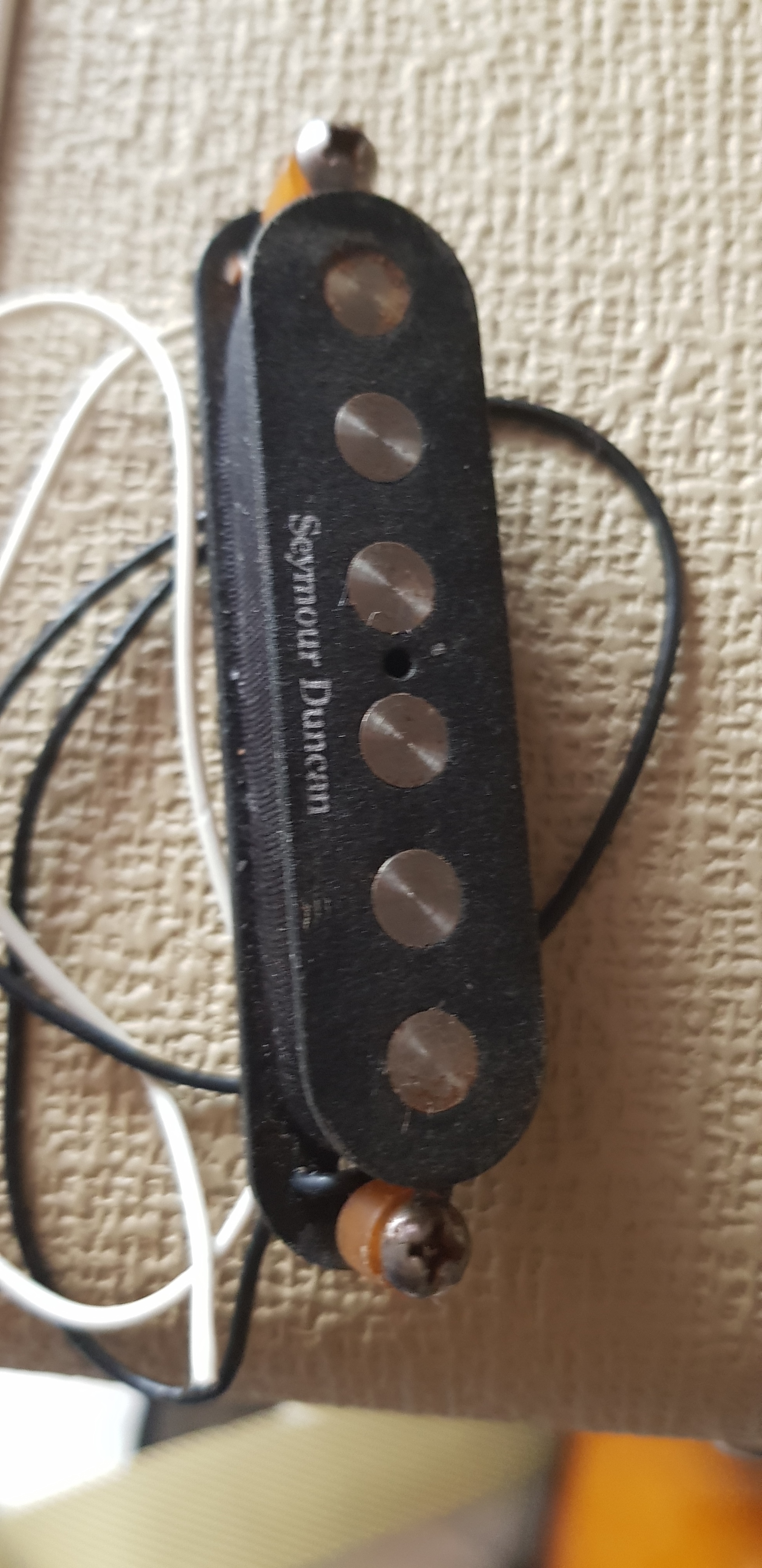
- #Duncan ssl6 review generator
- #Duncan ssl6 review full
- #Duncan ssl6 review series
- #Duncan ssl6 review free
Perfect for Texas blues rock, classic rock and heavy rock.Ĭalibrated set available with RW/RP middle pickup.
#Duncan ssl6 review free
FREE shipping in the USA!īeefed up true single-coil for warm instruments. The capacitance value is derived from the inductance and measured resonant peak.The Seymour Duncan SSL-6 Custom Flat Strat pickup - white.
#Duncan ssl6 review series
The inductance and Q measurements are made with an Extech 380193 in "SER" series mode, and the mean value between the 1kHz and 120Hz modes is recorded. I measured the probes' capacitance at 20pF, so that amount is subtracted from the capacitance calculation. The pickup is connected to an integrator circuit, designed by Ken Willmott, with a Velleman 10x probe, and fed back into the Velleman PCSGU250.
#Duncan ssl6 review generator
It's easy to see, though, that this combination of factors makes the tapped tone somewhat dissimilar to a vintage output Strat pickup.īode plots are made with a Velleman PCSGU250 and the supplied probes in 10x mode, with the function generator feeding a driver coil of 0.48mH, placed on top of the pickup and driven with 2Vpp. The loaded tapped resonant peak is 3.4kHz,and that's dark by Strat standards, but then the Q factor is 2.5 (suggesting / confirming a rather low inductance), where 1.6 to 1.8 is more typical of a vintage Strat pickup, which wins back some treble. The loaded peaks are a little further apart, thanks to the swamping cable capacitance (470pF). They should have resonany peaks that are oceans apart, but due to that huge tapped capacitance, they end up close, at 4.3 and 4.4 kHz. The Extech LCR meter puts the untapped inductance at 7H and the tapped inductance at 2H (though this might be inaccurate).
#Duncan ssl6 review full
The result of this design is that, shockingly, the "unloaded" resonant peak of the tapped mode is just barely higher than the full mode's resonant peak. If they terminated the coil at this eyelet, and then started a new strand of wire from another eyelet, then four conductor cable could have been used to offer access to each coil in isolation of the other, eliminating the capacitive coupling.

The red wire connects to the "tap" eyelet.

The way a tapped coil is made, is after so many turns, they pull the wire through one eyelet, solder it, and then continue winding. Due to the short wire leads, it's also impossible to correct the problem at home. This flaw could be corrected by giving the pickup a proper "four conductor cable" instead of three, as with three conductor, it's impossible to disconnect the unused outer coil. Unless you consider 20ft capable capacitance a good thing. If they wanted the tapped sound to be reminiscent of a vintage type Strat pickup, they could have got a lot closer.ĭesign flaw? I'd say so. When the outer section of the coil is disabled, it's still connected at one end, causing the unused portion of coil to capacitance couple with with the used portion. The cause is obvious, but I would have never imagined the capacitive coupling would be so dramatic.

That's roughly equivalent to a 20 foot long guitar cable's worth of capacitance. The measured results show a very surprising thing, a wildly large amount of unwanted capacitance when tapped, around 600pF capacitance when tapped.

It's safe to assume that this was the design goal of this pickup. The very low loaded Q factor and resonant peak makes the SSL-4 similar to hot PAF type humbucker, from an electrical standpoint, although this pickup gets there with a higher wind count, rather than steel core components. Pole pieces: 0.2525" diameter (typically 0.18"), Flux density at top center: 600G to 1000G. Strat pickups this hot should be thought of more as humbuckers, and paired with 500k, or even 1meg pots. It was actually a very versatile setup, and the tapped tone was nice, but ultimately I felt it just looked too ugly, and so I tried the same thing again with tapped SSL-5's, and it's pretty much the same equation, but with a stock Strat appearance. I had loaded a Strat with three SSL-4's, each one with a little tap dip switch, with the idea that the neck and middle would be tapped most of the time.


 0 kommentar(er)
0 kommentar(er)
